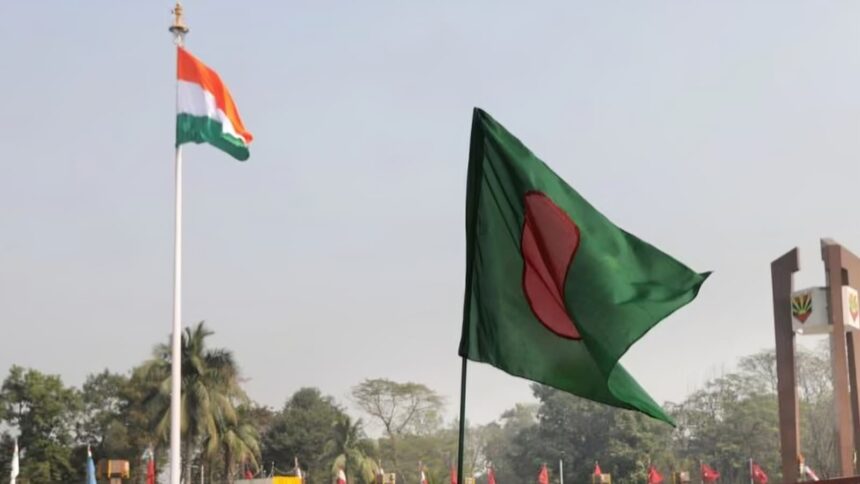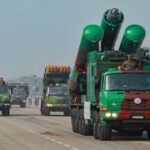With Bangladesh set to graduate from the United Nations’ Least Developed Country (LDC) category in November 2026 — a move that will end its duty-free access to export markets such as the European Union, posing fresh challenges — the country has begun a sharp economic pivot away from New Delhi towards Beijing, thereby straining trade ties with India.
Political and economic tensions between India and its largest trade partner in South Asia are growing, as the union government on Saturday decided to impose a number of — particularly ready-made garments, the country’s largest export item and a key source of foreign exchange.
This follows early signs of deteriorating ties between two countries, when New in April decided to terminate the five-year-old transhipment facility for Bangladesh’s export cargo — a mechanism that helped Dhaka smoothly ship its goods to several Western countries using Indian land routes and airports.
While government sources say that Saturday’s import restrictions and the termination of the transhipment facility are a result of similar restrictions imposed by Dhaka and port congestion caused by goods from Dhaka respectively, Bangladesh’s Chief Adviser — an economist and Nobel laureate who has suggested expanding the influence of the Chinese economy around India’s strategically important Northeast region — has contributed to worsening India–Bangladesh trade relations.
However, this fits squarely into to limit India’s influence, as India chose not to join the China-led Regional Comprehensive Economic Partnership (RCEP) agreement and is positioning itself as an alternative manufacturing destination by pursuing closer economic integration with the US, UK, EU, and the European Free Trade Association (EFTA) region.
New Delhi has decided to restrict garment imports from Bangladesh as it is looking to attract labour-intensive jobs in the sector. This comes as India’s textile sector could see a push due to the free trade agreements. India has already received duty-free access to the UK market for its garment exports and has sought similar access in its trade deals with the EU and US.
Think tank Global Trade Research Initiative (GTRI) said that Indian textile firms have long protested the competitive edge enjoyed by Bangladeshi exporters — who benefit from duty-free Chinese fabric imports and export subsidies — giving them a 10–15 per cent price advantage in the Indian market.
“Top global brands like H&M, Zara, Primark, Uniqlo, and Walmart source apparel from Bangladesh, some of which enters India’s domestic market. Indian manufacturers have long expressed concern over the uneven playing field: they pay a 5 per cent GST on locally sourced fabric, while Bangladeshi firms import fabric duty-free from China and receive export incentives for sales to India — giving them an estimated 10–15 per cent price advantage,” GTRI said.
A government official said that Bangladesh has recently imposed port restrictions on exports of Indian yarn via land ports, allowing Indian yarn exports only via seaports. This has ostensibly been done in response to demand by Bangladeshi textile mills, even though the land route offers the quickest and cheapest yarn supply to the ready-made garments industry in Bangladesh, the official said.
Notably, yarn exports to Bangladesh comprise 20 per cent of India’s total exports to Bangladesh worth $11.38 billion in FY25. Official data showed that cotton yarn and handloom product exports to Dhaka stood at $2.39 billion during the last financial year. India imports ready-made garments from Bangladesh valued at over $700 million annually.
“Bangladesh cannot cherry-pick terms of bilateral engagement solely to benefit itself or take India’s market access for granted. India is willing to engage in discussion but it is Bangladesh’s responsibility to create an environment free of rancour,” the official quoted above said.
China has been rapidly increasing its influence on South Asian countries, particularly Bangladesh. For instance, China has allowed 97 per cent of Bangladeshi goods duty-free access to its domestic market since June 2020. More importantly, it is helping the country diversify its export base and move its industry up the value chain.
According to the Carnegie Endowment for International Peace, the largest number of infrastructure projects developed with Chinese help in South Asia are in Bangladesh. Bangladesh is China’s second-largest buyer of military hardware globally, accounting for almost one-fifth of China’s total exports between 2016 and 2020. Chinese arms make up over 70 per cent of Bangladesh’s major arms purchases, according to a 2020 report by the Stockholm International Peace Research Institute.
“The fall of ’s pro-India government in mid-2024 and the rise of an interim administration under Muhammad Yunus have brought a willingness to align with Beijing. Yunus’s visit to China in March 2025 yielded $2.1 billion in new investments and cooperation agreements. China’s involvement in sensitive infrastructure projects like the Teesta River development marks a growing strategic footprint — posing a direct challenge to India’s influence in the region,” said former trade officer and head of GTRI Ajay Srivastava.








